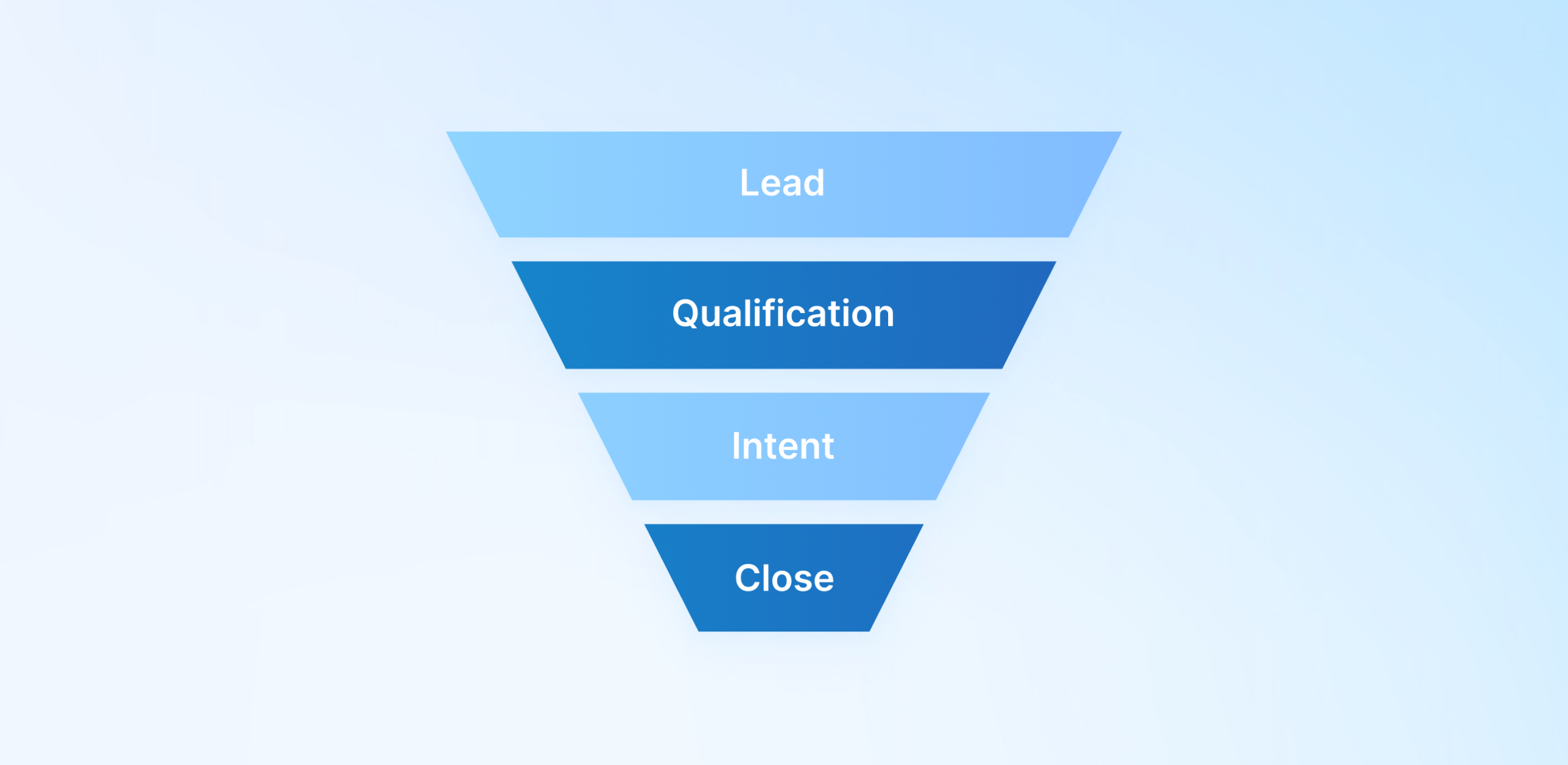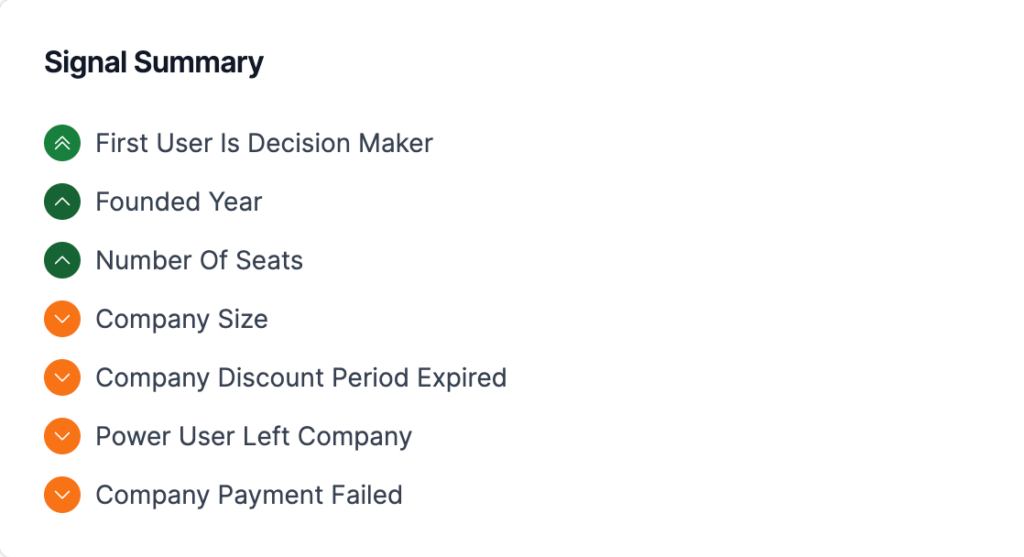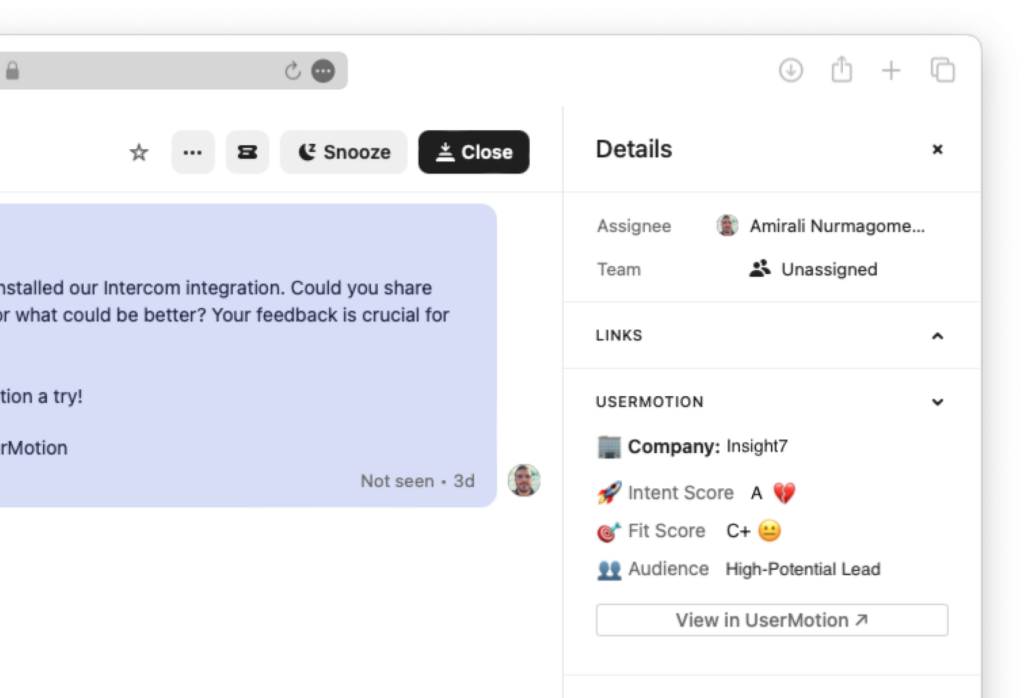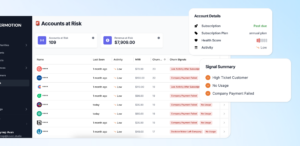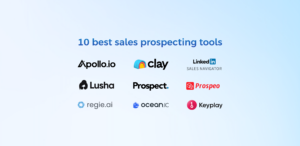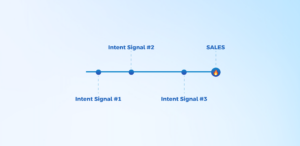When creating a sales funnel, it is essential to define the exact stages and the actions required at each step, adjusted to the specific needs and characteristics of your business.
While starting with a simple sales funnel can provide a basic path, it becomes essential to focus on developing a B2B sales funnel, as well as other types such as enterprise or SME funnels to really meet your specific requirements.
Let’s explore how you can build a sales funnel for your SaaS that not only adapts to your business-to-business interactions, but also enhances them.
What is a B2B Sales Funnel for SaaS?
The B2B sales funnel is a structured process that defines the journey of B2B customers from initial awareness to final purchase. This funnel embodies a series of strategic stages designed to convert prospects into loyal customers with a focus on maximizing return on investment (ROI).
Adapted to the nuances of SaaS products, these funnels emphasize the AIDA (Awareness, Interest, Desire, Action) model to effectively guide the buyer’s journey.
B2B vs B2C Sales Funnel
The difference between B2B and B2C sales funnels lies in the complexity and duration of the B2B sales cycle compared to its B2C counterpart.
Characterized by higher risks and more detailed decision-making processes, B2B transactions typically involve longer sales cycles.
This lengthening requires additional mid-funnel stages to further promote a thorough evaluation of product and company fit by potential buyers.
The longer B2B sales cycle is attributed to the higher costs associated with B2B products and services and requires more time for decision making and finalizing the purchase.
This contrasts with B2C transactions, which are often faster due to lower price points and simpler decision processes. Furthermore, B2B purchasing decisions are often subject to extensive review and follow a highly structured procedure.
B2B funnel-specific features include:
- Product tours or excursions
- Product comparison tables
- Case studies
- Video testimonials
- Enterprise contacts
- Product usage and intent signals
- ICP factors
- Customized solutions
What are the Stages of a B2B Sales Funnel?
The stages of a B2B sales funnel special for SaaS consist of:
- Awareness (Lead)
- Intent (Qualification)
- Desire (Intent)
- Action (Close)
1. Awareness (Lead)
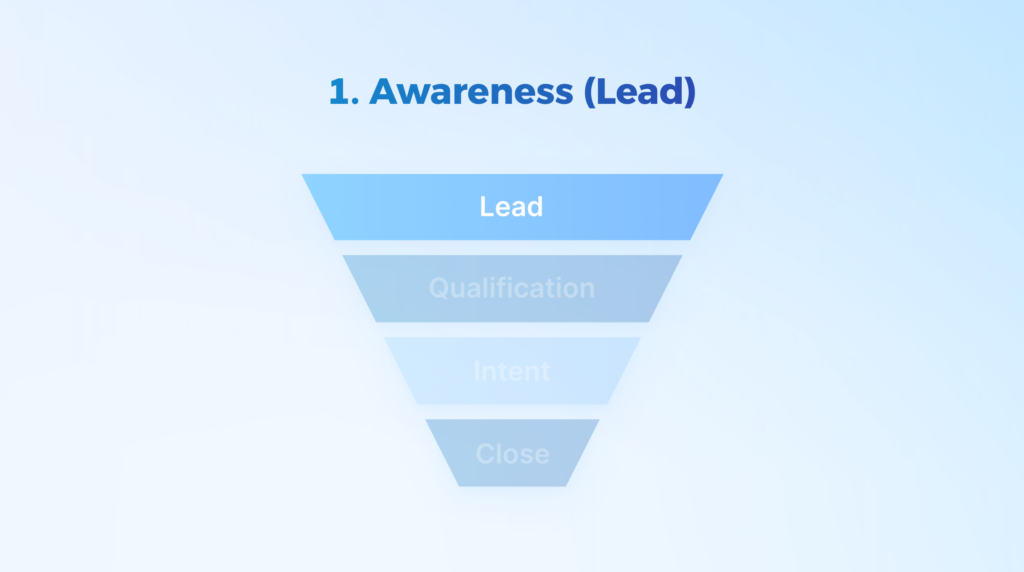
The first stage of the funnel, also known as Top of Funnel (TOFU), focuses on prospecting. This stage is about building a wide network to identify potential customers in the market.
The goal is not to make an immediate sale, but to increase brand awareness. It is to communicate not only the value of the product, but also the ongoing support and service that accompanies it.
Creating awareness is crucial as it sets the stage for engaging potential customers and moving them further down the sales funnel.
Signals
The signals that indicate that a lead is in the awareness stage are:
- Website visits
- Use case visits
- Webinar sign-ups
- Social media engagement
- Product sign-ups
Actions
You can take the following actions for the awareness (lead) stage:
- Content marketing (blog posts, infographics, white papers)
- PPC landing pages
- SEO optimization
- Social media posts
- Ads
- Hosting webinars
- Podcasts
- Youtube videos
- Quora/Reddit answers
- Interviews
- LinkedIn marketing
- Analyze customer-fit
Example
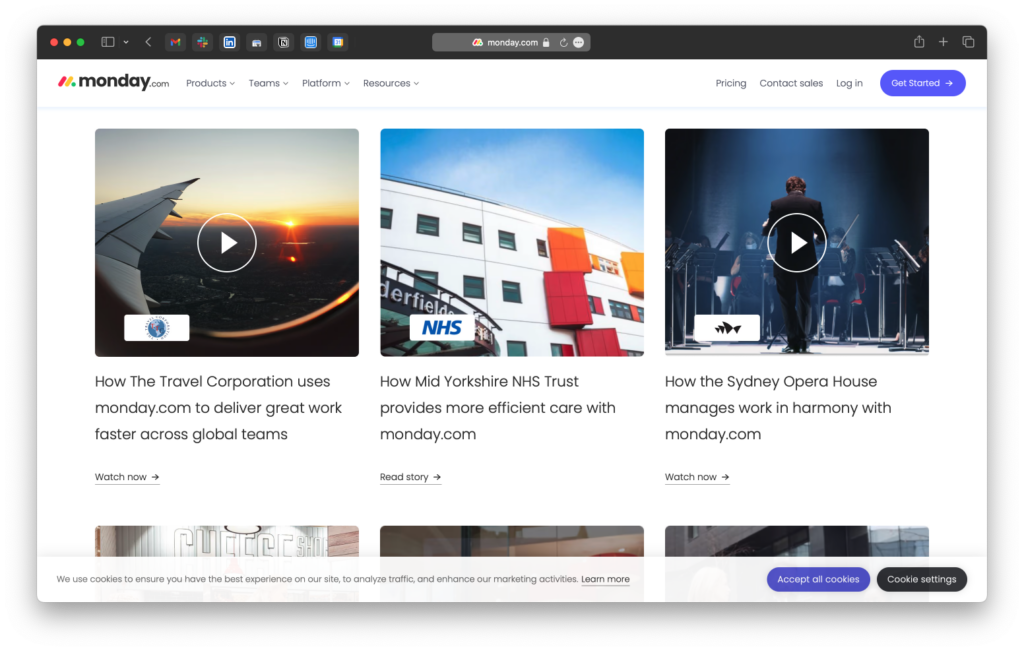
For example, B2B services, such as project management services, create detailed use case pages and resources to build awareness of their offerings, aligning with the characteristics of their ideal customer profile.
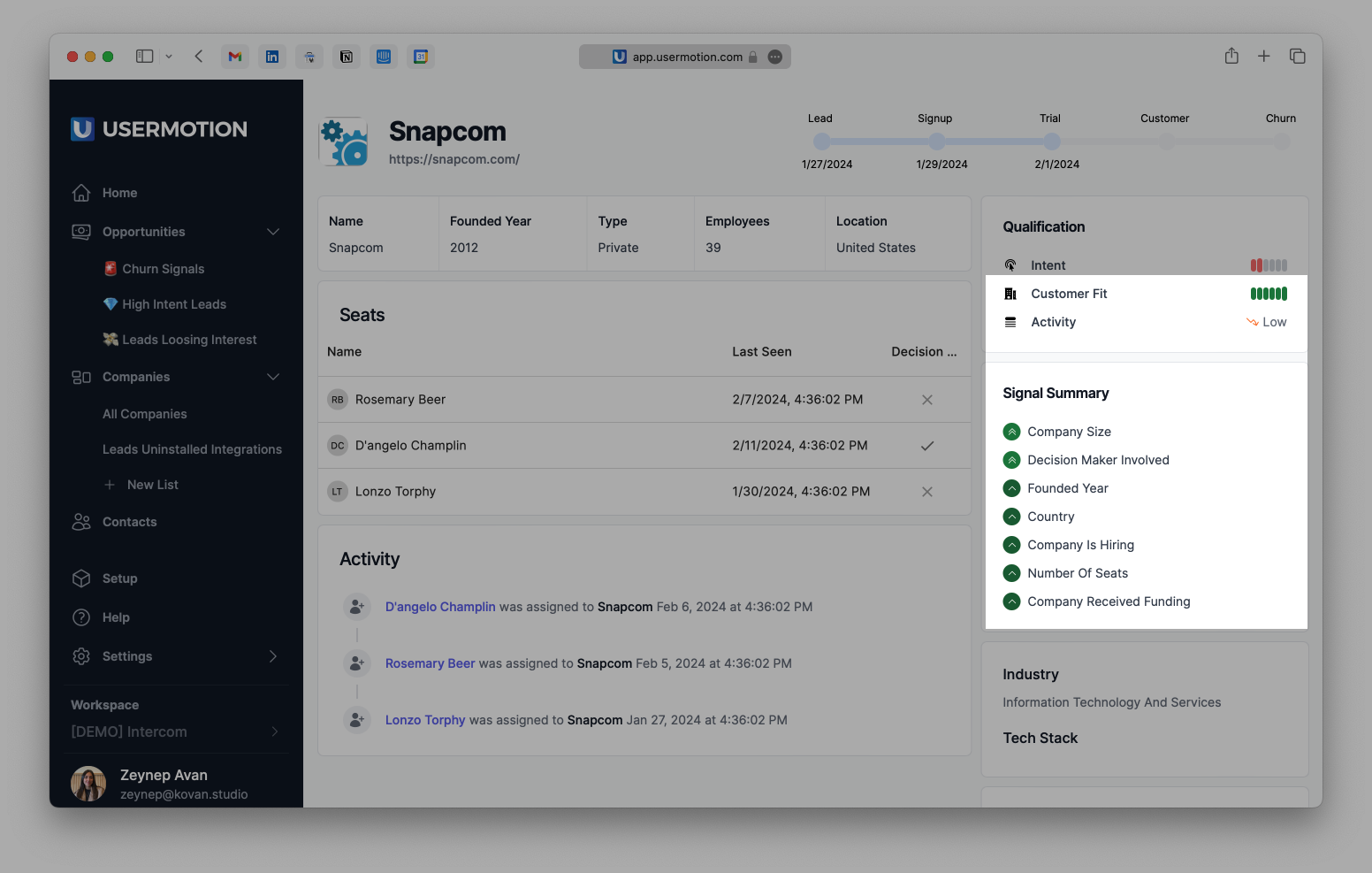
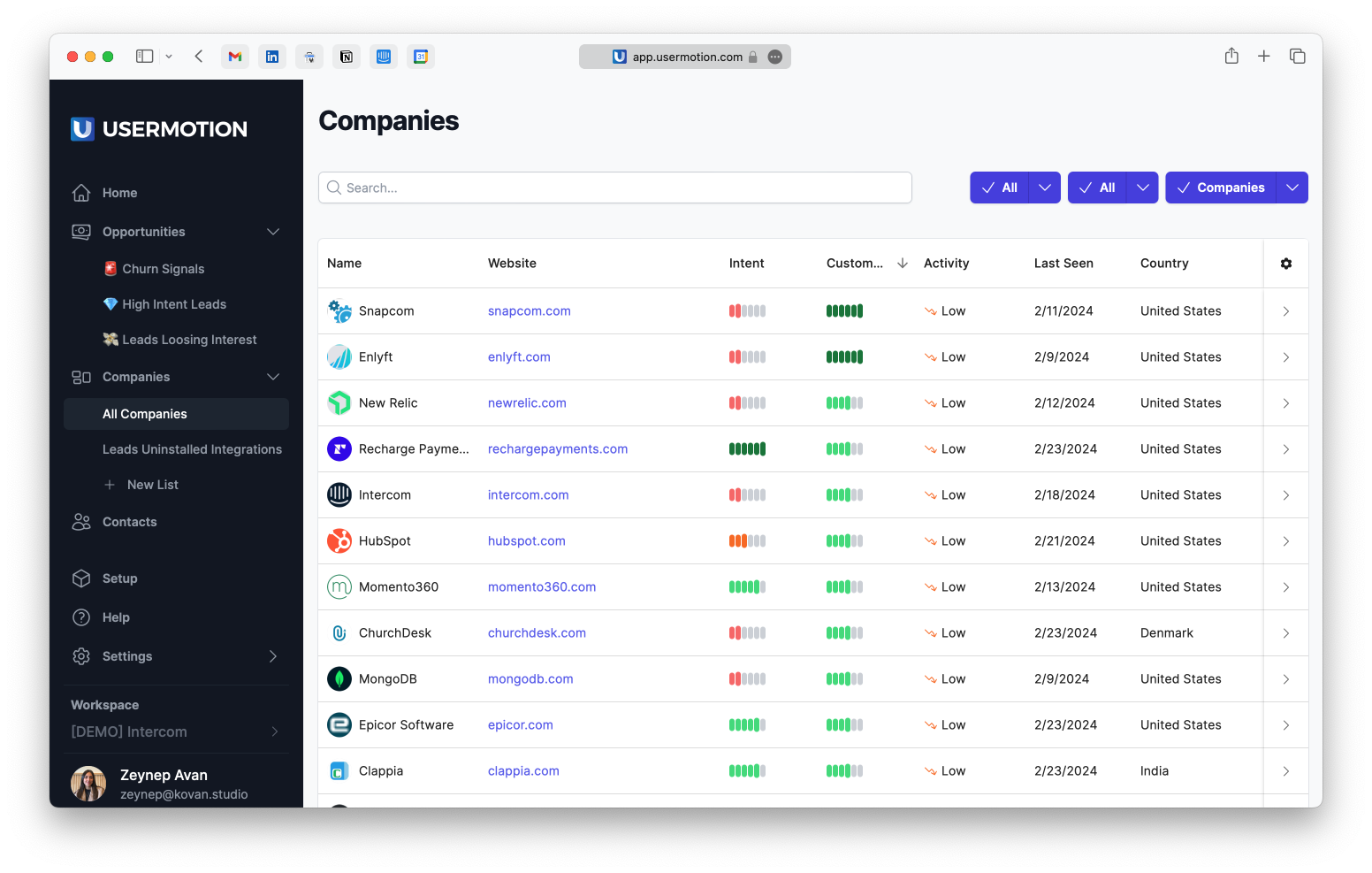
You can also use tools like UserMotion to score your lead based on customer-fit signals and prioritize the leads with the highest score.
2. Intent (Qualification)
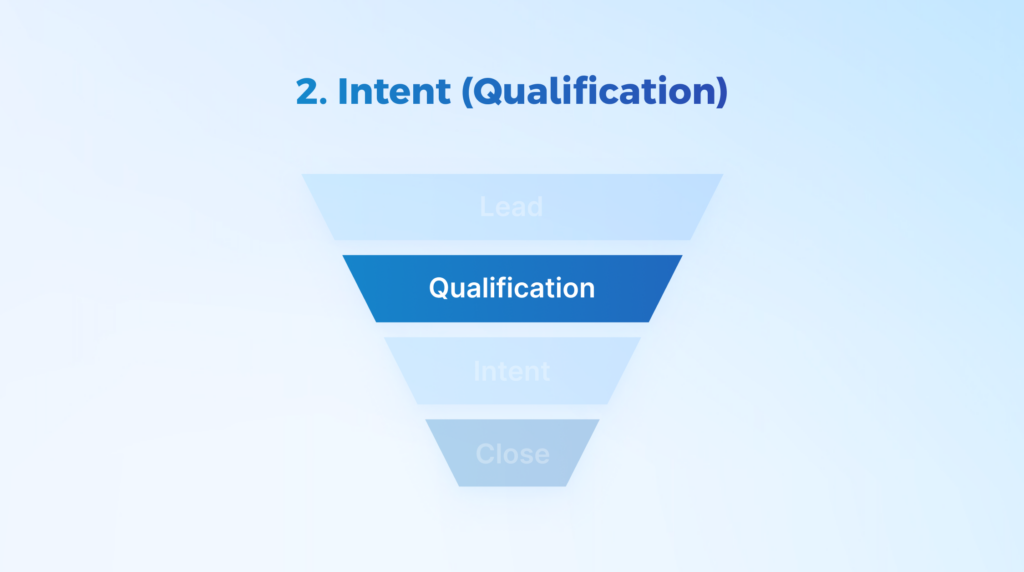
Following the awareness phase, we enter the Middle of the Funnel (MOFU), which starts with lead qualification.
This stage involves reviewing prospects from the awareness stage to determine their budget and buying decision-making authority, as well as their interest in your SaaS offerings.
Proper qualification of leads enables sales teams to focus their efforts on leads that are more likely to convert, thus increasing win rates and preventing resources from being wasted on unqualified leads.
Signals
The signals that indicate that a lead is qualified:
- Filling out contact forms
- Requesting a product demo
- Product usage signals
- Downloading detailed product materials
- Support contacts and specific inquiries
Actions
You can take the following actions for the intent (qualification) stage:
- Direct outreach by sales teams to offer personalized demos
- Product-led growth (in-product actions) You can create dedicated PLG sales funnel.
- Bottom of Funnel articles
- FAQs
- Sending detailed product information and case studies
- Scheduling meetings and calls
Example
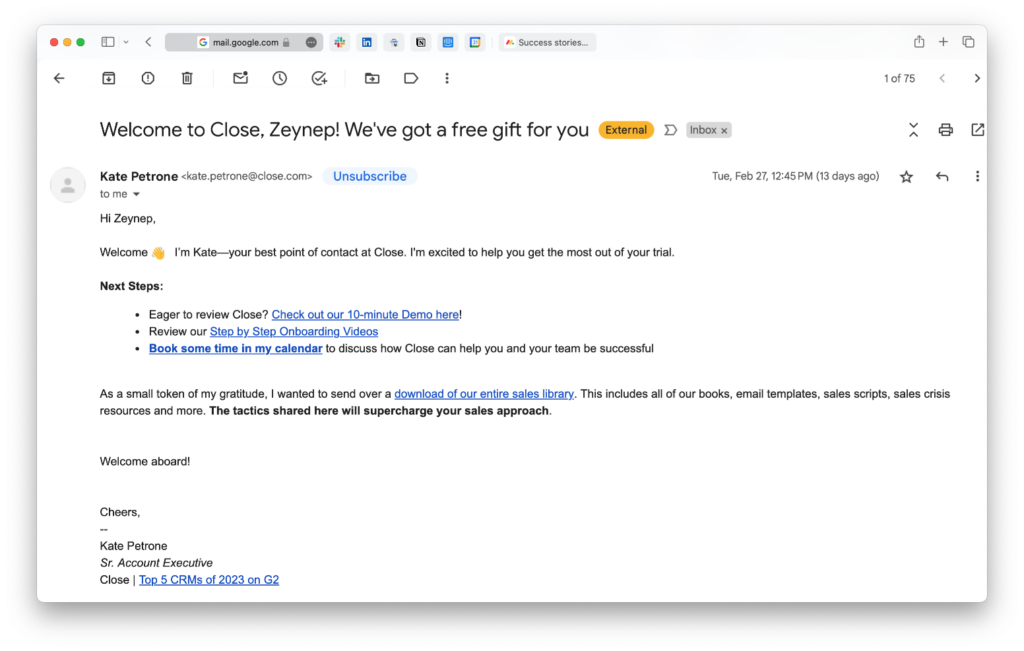
One of the most common ways to move leads through the funnel is email marketing. SaaS businesses often send emails to qualified leads to offer next steps, free resources and meetings.
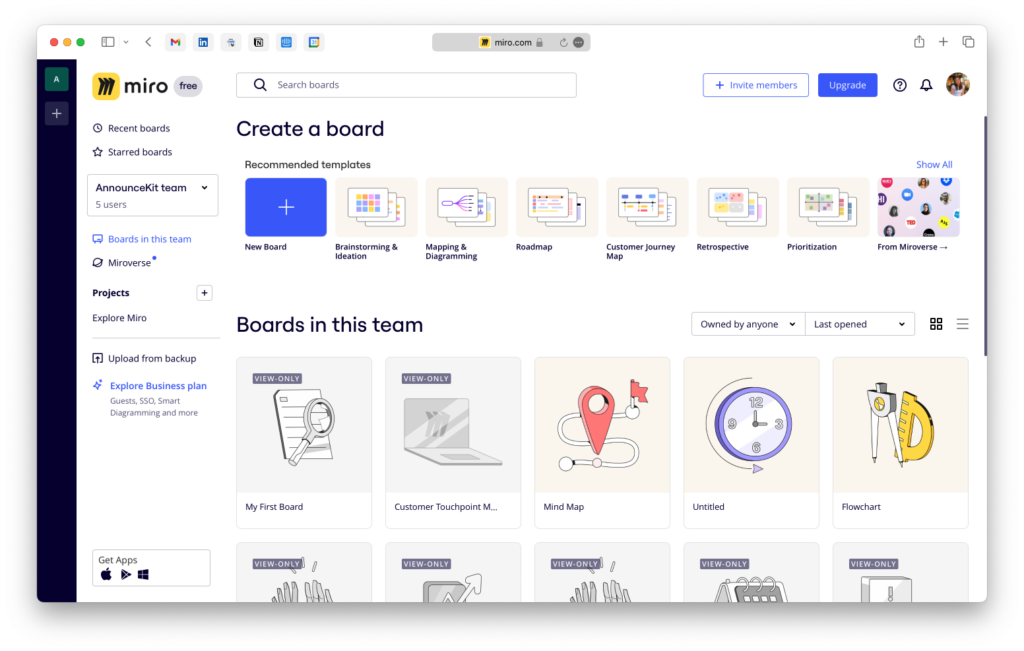
Recently, with the rise of product-driven growth strategies, SaaS businesses have also been implementing in-app actions to move prospects down the funnel. This includes free trials, freemium, activation events, templates, onboarding flows and in-app product tips.
3. Desire (Intent)
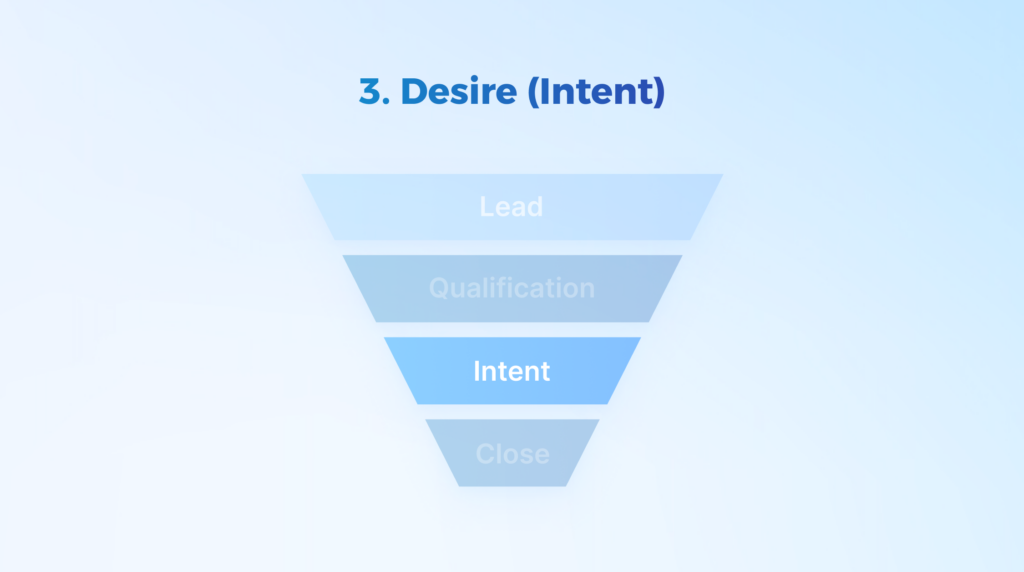
The ongoing Intent phase in MOFU is when potential customers show an active interest in learning more about your SaaS solutions.
In this phase, the role of your sales team becomes more consultative and aims to build deeper connections with prospects by addressing their questions and concerns on the spot.
This phase is mostly meant to nurture prospects, clarify their doubts and bring them closer to making a purchase decision.
Signals
The signals that indicate that a the lead is showing deep intent and interest:
- Repeated engagement with specific product features
- Participation in a free trial
- Detailed discussions during demo sessions
Actions
You can take the following actions for leading a lead down to the desire (intent) stage:
- Providing custom consulting
- Product reviews
- Offering trial extensions
- Offering special pricing
- Addressing specific concerns or customization requests
- Analyze intent signals
Example
In this stage, the sales team can note the interest of the lead and offers an extended trial period, coupled with a detailed session on maximizing these features.
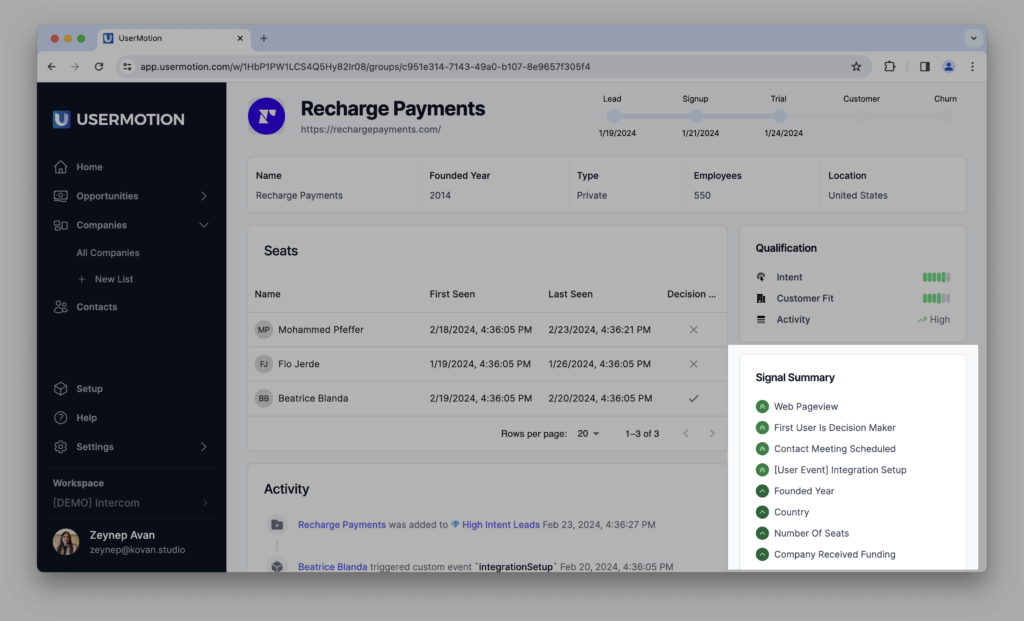
Additionally, the team can assess specific signals of intent to refine their messaging and engagement strategies. UserMotion lets you see all intent signals in one place and score your leads with predictive lead scoring.
4. Action (Close)
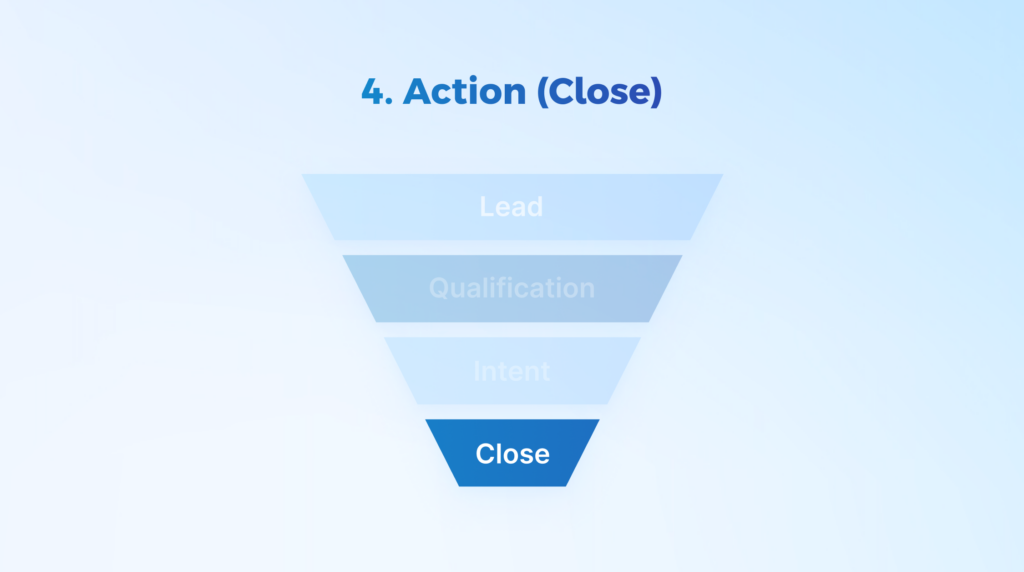
The final stage, known as Bottom of the Funnel (BOFU) or closing, is where the deal is won or lost.
But in the context of SaaS sales, closing is not just an end point, but the beginning of an ongoing relationship.
The goal is for the sales team to secure an initial deal that not only meets the customer’s immediate needs, but also sets the stage for future contract renewals and expansions.
While not every closing will result in a win, it is important to understand that every interaction provides valuable insights to improve the sales process and strategy.
Signals
The signals that indicate that a the lead is ready to buy:
- Final negotiations on pricing and terms
- Verbal commitment to purchase
- Requests for contract
- Requests for payment details
Actions
You can take the following actions to close the deal:
- Discussing implementation
- Technical support services
- Offering final onboarding sessions and resources.
- Finalizing contracts
Example
After extensive discussions and a successful trial period, a company indicate their intent to purchase your product.
The SaaS provider’s sales team can work closely with the procurement and IT departments to negotiate contract terms, offering a detailed implementation roadmap and dedicated support for seamless integration. This not only closes the sale but lays the groundwork for a long-term partnership.
5 Tips for a Better B2B Sales Funnel
Building an effective B2B sales funnel, especially for SaaS, drives leads from initial awareness to purchase and beyond. And, it can only be possible with optimizing yours with several best practices.
1. Create well-designed TOFU Materials
Top of the Funnel (TOFU) materials are essential for creating awareness and capturing the interest of potential leads. Well-designed content can attract and educate your target audience, setting the stage for further engagement.
Do not just focus on blog posts and articles. Focus on high-quality, informative content such as ebooks, infographics, and videos that address common pain points and questions.
2. Track Intent Signals
Intent signals are actions taken by leads that indicate their interest level. Tracking these signals helps you understand where the lead is in the buying journey and create your engagement accordingly.
Use analytics tools to track website behavior, product usage, email engagement and social media interactions. Look for patterns such as frequent visits to product pages, downloads of detailed materials, repeat use of product features, or engagement with specific pieces of content.
3. Score Leads in the Sales Funnel
Lead scoring is the process of assigning a value to each potential customer based on their interactions and likelihood of becoming a customer. This helps prioritize leads and build more perfoming sales funnels.
Build a lead scoring model based on intent signals, engagement and demographics or use lead scoring software with predictive analytics. Regularly review and adjust scoring criteria based on conversion rates and feedback from the sales team.
4. SaaS Sales Funnel Doesn’t End at Close
In SaaS, the customer relationship does not end with the first sale. In fact, post-purchase engagement is important for retention, upselling and building long-term relationships.
Offer regular check-ins and provide ongoing support and training even after the close. Use customer feedback to continuously improve your product and service to make them keep coming back.
5. Refine the Stages in the Funnel
As your business and customer base evolves, so should your sales funnel. Regularly reviewing and refining the stages of your funnel ensures it remains aligned with the needs of your prospects.
Periodically review your sales funnel stages by analyzing performance data. Look for bottlenecks, underperforming content and opportunities to increase engagement at each stage.
Comments: Why to Build a Proper Funnel?
Building a proper funnel means aligning with the journey your potential customers go through from discovering your product to making a purchase.
It’s about understanding their needs at each stage and providing the right information and support to guide them closer to a decision.
For me, refining the funnel isn’t just about improving sales; it’s about creating a more meaningful and efficient experience for both our team and our customers.
By focusing on the right stages and actions, we can use our resources more effectively, identify where we’re losing potential customers, and adjust our strategy to better meet their needs.
Ultimately, a well-constructed funnel helps ensure that we’re not just chasing leads, but building relationships that can lead to sustained growth and customer satisfaction.

